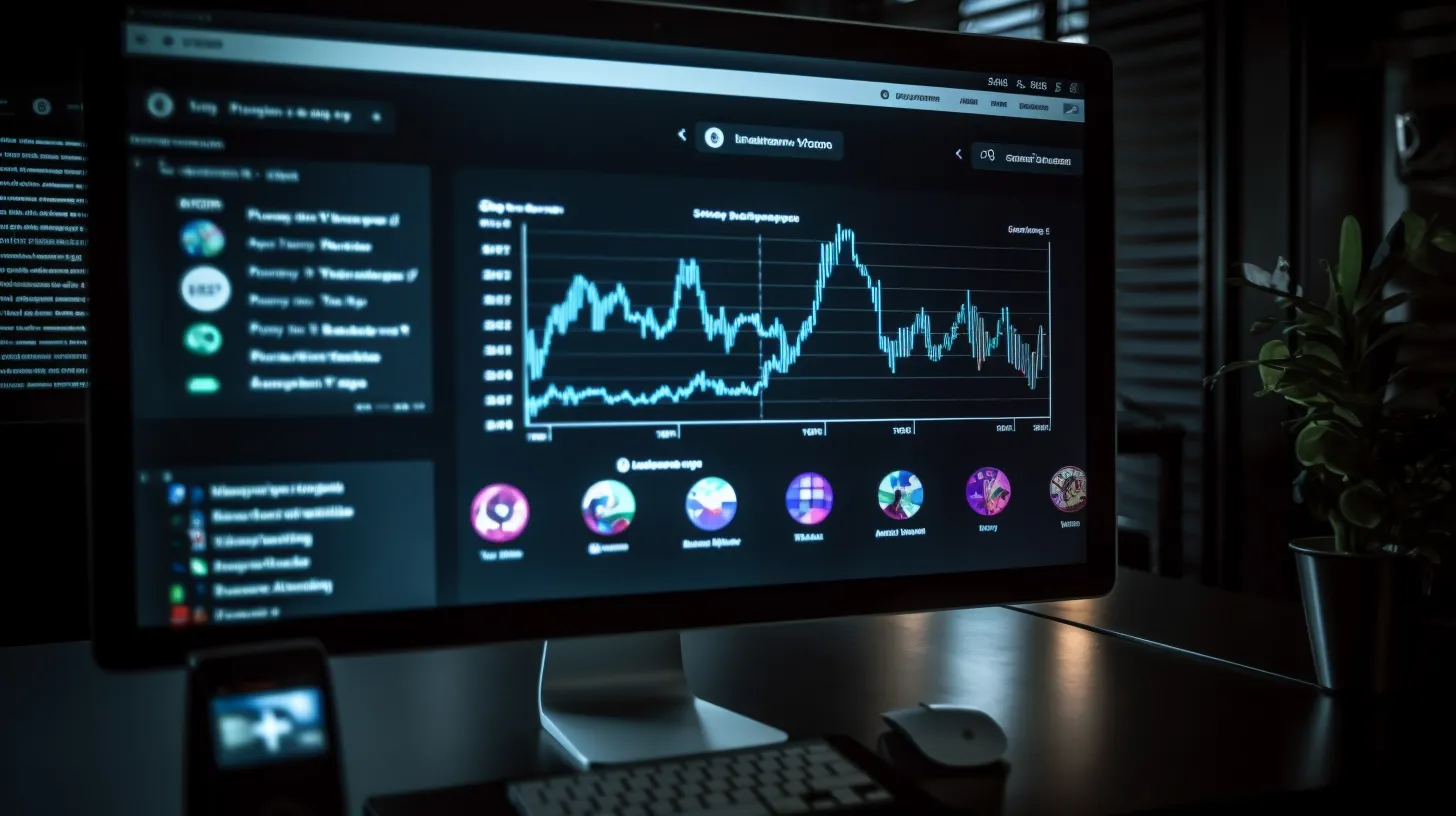Maximizing Social Media Roi: Social Media Analytics In Internet Marketing Services
If you're looking to maximize your social media return on investment (ROI), then understanding social media analytics is crucial. Through analyzing key metrics and gaining insights into your audience's behavior, you can implement more effective strategies that will increase engagement, drive traffic, and ultimately boost conversions.
In this article, we'll explore the world of social media analytics in internet marketing services. We'll delve into the importance of setting goals and objectives, analyzing metrics such as reach and engagement rates, implementing insights gained from data analysis, and choosing the right tools for your business. By the end of this piece, you'll have a clear understanding of how to use social media analytics to optimize your digital marketing efforts and achieve better results.
Understanding Social Media Analytics
Understanding social media analytics is essential for businesses to optimize their online presence and identify areas for growth. Social media analytics refers to the collection, measurement, and analysis of data from various social media platforms. With this information, businesses can gain insights into their audience demographics, engagement levels, content performance metrics, and much more.
Social media analytics tools allow businesses to track their progress towards achieving their marketing goals and objectives. By monitoring key metrics like reach, engagement rates, follower growth rate or conversion rate over time, brands can make informed decisions about how to improve their overall social media strategy. These tools also enable marketers to benchmark against competitors and understand the latest trends in social media marketing.
To maximize the benefits of social media analytics in internet marketing services, it's crucial that you have a solid understanding of your business goals and objectives. By setting clear goals for your brand on each platform – such as increasing brand awareness or driving website traffic – you'll be able to measure the success of your campaigns more effectively. With these goals in mind alongside an understanding of what data points are most relevant to tracking progress towards those objectives will help you create high-quality content that resonates with your target audience while maximizing ROI.
Setting Goals and Objectives
Achieving your desired outcomes and hitting your targets is crucial in any successful digital marketing campaign. To maximize your social media ROI, you need to set specific goals and objectives. Here are four steps to help you get started:
- Identify the metrics that matter: Determine which social media analytics are most relevant to your business goals. For example, if you want to increase brand awareness, track metrics such as reach, impressions, and engagement.
- Set realistic targets: Based on your current performance data and industry benchmarks, establish attainable goals for each metric. Make sure they align with your overall marketing strategy.
- Develop an action plan: Once you have identified the metrics and set targets, create a plan of action to achieve them. This should include tactics such as content creation, audience targeting, and advertising.
- Monitor progress regularly: Regularly monitor your progress against your targets using social media analytics tools such as Google Analytics or Hootsuite Insights. Adjust your strategy as needed based on the insights gained from these tools.
By setting clear goals and objectives for your social media campaigns, you can measure success more accurately and adjust strategies accordingly for better results. Now that you have established what needs measuring let's move onto analyzing those social media metrics!
Analyzing Social Media Metrics
When it comes to analyzing social media metrics, there are three key points you need to focus on. The first is measuring your reach and engagement, which helps you understand how many people are seeing and interacting with your content. Secondly, it's important to analyze your conversion rates to see how effective your social media efforts are at driving sales or other desired actions. Finally, tracking brand sentiment can give you valuable insights into how customers perceive your brand online. By paying attention to these metrics, you can make data-driven decisions that maximize the ROI of your social media marketing efforts.
Measuring Reach and Engagement
Measuring the reach and engagement of your social media content is crucial for optimizing your internet marketing strategy. Reach refers to the number of people who have seen your content, while engagement refers to how many people have interacted with it. To measure these metrics, you can use various tools such as Facebook Insights, Twitter Analytics and Google Analytics.
Reach can be measured by looking at the total number of followers or fans across all social media platforms, as well as the number of shares and retweets. Engagement can be measured by analyzing likes, comments, mentions and direct messages. By measuring both reach and engagement, you can determine which types of content are resonating with your audience and adjust your strategy accordingly. Now that you know how to measure reach and engagement on social media, let's move on to analyzing conversion rates.
Analyzing Conversion Rates
To effectively analyze conversion rates, you'll need to take a deep dive into the data collected from your website and social media channels. Conversion rate is the percentage of people who take a desired action after seeing your content or advertisement. This could be anything from making a purchase, signing up for a newsletter, or filling out a contact form. By analyzing conversion rates, you can identify which campaigns are most effective in driving these actions and adjust your strategies accordingly.
One key metric to look at when analyzing conversion rates is the click-through rate (CTR). This measures how many people clicked on your call-to-action (CTA) compared to how many people saw it. A high CTR indicates that your CTA was effective in motivating people to take action. Another important metric is the bounce rate, which measures how many people leave your website immediately after landing on it. A high bounce rate may indicate that your website's design or messaging needs improvement. By understanding these metrics and making strategic adjustments based on them, you can maximize the return on investment (ROI) of your internet marketing services.
Analyzing conversion rates is just one piece of the puzzle in maximizing social media ROI. The next step is tracking brand sentiment to gain insights into how consumers perceive your brand online.
Tracking Brand Sentiment
Don't overlook the importance of tracking brand sentiment in order to truly understand how consumers perceive your brand online. This is because it can help you identify potential issues that may affect customer loyalty and satisfaction, as well as highlight areas where you're doing well. Here are three reasons why tracking brand sentiment should be an integral part of your social media analytics:
- Gain insights into customer preferences: By tracking brand sentiment, you can identify what customers like or dislike about your products and services, enabling you to make informed decisions on how to improve them.
- Monitor competitor activity: Tracking brand sentiment not only helps you keep tabs on what people are saying about your own brand but also allows you to monitor conversations about competitors' brands. This can give you valuable insights into competitive positioning and market trends.
- Build a stronger online presence: Positive brand sentiment can drive engagement, increase follower count and grow sales. By monitoring and addressing negative feedback promptly, businesses can protect their reputation and build trust with customers.
With these benefits in mind, it's clear that tracking brand sentiment should be a key part of any internet marketing strategy. Once this data has been collected and analyzed, the next step is implementing social media insights into actionable steps that will help businesses maximize their ROI from social media channels.
Implementing Social Media Insights
You can truly unlock the power of your social media presence by utilizing social media insights, which provide valuable data on your audience and their behavior. By implementing social media insights, you can gain a better understanding of what content resonates with your audience and adjust your strategy accordingly. This information can help you maximize engagement, increase brand loyalty, and ultimately drive conversions.
One way to utilize social media insights is by analyzing post performance metrics such as reach, impressions, clicks, and engagement rates. You can use this data to identify top-performing posts and replicate successful strategies in future content. Additionally, tracking follower growth and demographic information can provide insight into who is engaging with your brand on social media platforms.
To make the most out of social media analytics tools, it's important to choose ones that align with your business goals and objectives. Consider factors such as ease of use, reporting capabilities, integration with other marketing channels or software systems, and cost when selecting a tool. With the right analytics tool in place, you'll be able to effectively measure the success of your social media efforts and make informed decisions for future campaigns without wasting time or resources on ineffective strategies.
Choosing the Right Social Media Analytics Tools
Imagine having a powerful tool that helps you measure the success of your social media efforts and make informed decisions for future campaigns without wasting time or resources on ineffective strategies - this is where selecting the right social media analytics tool becomes crucial. With so many options available, it can be overwhelming to choose the best one for your business needs. However, by considering the following factors, you can narrow down your search and find a tool that maximizes your ROI:
- Features: Look for tools that offer comprehensive metrics such as engagement rate, reach, impressions, and conversion rates. Additionally, consider if the tool integrates with other platforms you use or provides sentiment analysis.
- Usability: The tool should have an easy-to-use interface and allow customization of reports to suit your specific needs.
- Pricing: Different tools have different pricing structures. Consider how much you're willing to spend on a social media analytics tool and what features are most important to you.
Once you've selected a suitable tool, ensure that its data aligns with your business objectives. This way, you can track progress over time and adjust strategies accordingly. Remember that choosing the right social media analytics tool is an investment in both time and money; however, it's worth it if it leads to higher engagement rates, increased conversions, and ultimately greater ROI.
Frequently Asked Questions
How can social media analytics be used to improve customer service?
You can use social media analytics to enhance customer service by tracking and analyzing customer feedback, complaints, and inquiries. These insights help you identify pain points and areas for improvement, respond promptly, and personalize your interactions to build stronger relationships with customers.
What are some common mistakes businesses make when analyzing social media metrics?
When analyzing metrics, common mistakes include focusing on vanity metrics, using incomplete data sets, and not setting clear goals. Ensure your analysis is comprehensive and aligned with business objectives to maximize ROI.
How can social media analytics be used to measure brand awareness?
To measure brand awareness using social media analytics, you can track mentions of your brand across different platforms, monitor engagement rates and analyze audience demographics. This helps in identifying potential customers and improving your social media strategy to increase reach.
What are some strategies for effectively implementing social media insights into a marketing campaign?
To effectively implement social media insights into a marketing campaign, identify key metrics and goals, analyze data regularly, use audience insights to inform content creation, and adjust strategies as needed. Consistency is crucial for success.
How can social media analytics be used to identify and target specific audience segments?
To identify and target specific audience segments, use social media analytics to track demographics, interests, behavior patterns and engagement metrics. Use this data to create targeted content and ads that resonate with your ideal customers, increasing ROI and driving conversions.
Conclusion
In conclusion, maximizing social media ROI is crucial in internet marketing services. By understanding social media analytics, setting clear goals and objectives, and analyzing relevant metrics, you can optimize your social media strategy for better performance. It's important to implement the insights gained from analytics by creating data-driven content that resonates with your audience.
Choosing the right social media analytics tools can also make a significant difference in achieving your goals. With a plethora of options available, it's essential to evaluate each tool's features and capabilities before making a decision. Ultimately, investing time and resources into social media analytics can help you gain a competitive edge in the digital landscape and achieve greater success in your internet marketing efforts.









